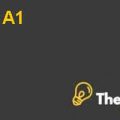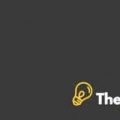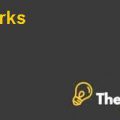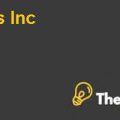Introduction:
Health development Corporation (HDC) is a group of health clubs, based in Boston, Massachusetts (MA).It owns health clubs most of which operates in Greater Boston area. In addition to Boston health organizations, HDC holds three more facilities, which operates in different cities of the same state (MA). These three facilitiesare the property under management contact, and contribute a significant part in HCD’s profits.High expectations (from these establishments) are reflected from their projected annual profit for the upcoming year (2000) which are $6.3 million for “The Wellesley Center,” $3.9 million from “The Lexington Club” and $2.7 million from “The Colonial Club.”
The period between 1994 and 1999 evidenced great success of HDC, when its profits increased three times, in response to rising revenue by 200%. In the last year of this period (1999), HDC acquired two health clubs (The Franklin Club & The Andover Club), one of which (The Andover Club) was a tennis-only club, and hence was upgraded to multiple facilities with significant investments. But since it was newly renovated, HDC still had to create customer awareness for its new services and expects that it will reduce group profits of the year 2000 by $ 400,000.
Health Development Corporaion Harvard Case Solution & Analysis
Just like all other health club hubs, HDC also maintained its clubs through leasing; this allowed HDC to direct relate the expense proportion (lease obligation payments) of the clubto the proportion of revenue from this particular club. Another reason for not owning the premises was that HDC prefers using its capital for expansion and modification rather than for purchasing.However, after some consideration, HDC decided to make an exception for Lexington Club real estate. The underlying reason for this exception was the amount of lease payment, which was surprisingly costing higher than purchase amount of Lexington.
After so many years of success, HDC finally recognizes that it has no potential to grow any further in future and CEO, Mr. Paul Couturier decides to receive bids from interested parties. For the purpose,Mr. Paul Couturier contacted Kaufman & Co. (Investment firm)in February 2000 for soliciting bids.
The most common tool for performing thestrategic analysis is SWOT.
The point of using SWOT analysis is to observe business operations from a new angle. For HDC, SWOT is useful to observe changes in industry and business and to access the ability to carry forward. SWOT forces the analytic to cover all parts of the business and observe business operations from a strategic view. The four factor of SWOT are:
Strengths – This aspect highlights the strong parts of the company and answers the question “what company do well?”
Weaknesses – This part enables the business to concentrate on its competitiveness, and highlight the areas which require improvements.
Opportunities – A company cannot grow if it cannot avail the opportunities to add value to its worth. A simple wayof doing that is by recognizing opportunities available in the market and industry.
Threats –The uncontrollable factors that exist outside the business and can affect operations of the businessnegatively. It is important to acknowledge the threats a company opposes, to make come-out strategies for avoiding or minimizing effects of these threats........................
This is just a sample partial work. Please place the order on the website to get your own originally done case solution.










